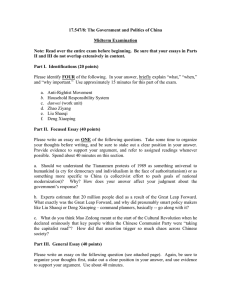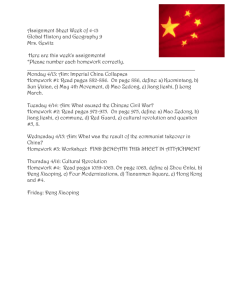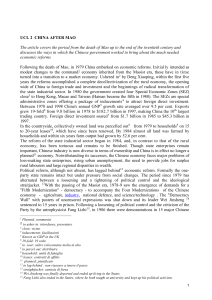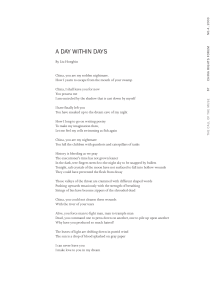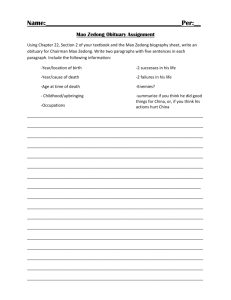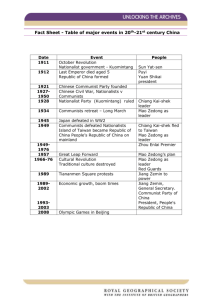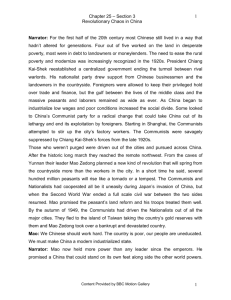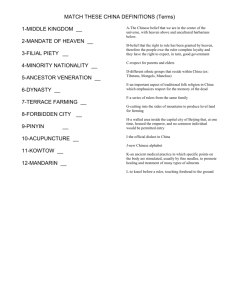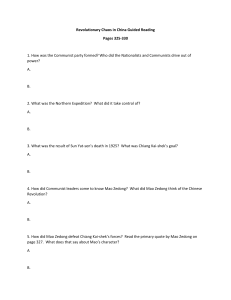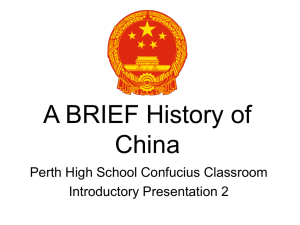During the presentations answer the questions below and define the
advertisement
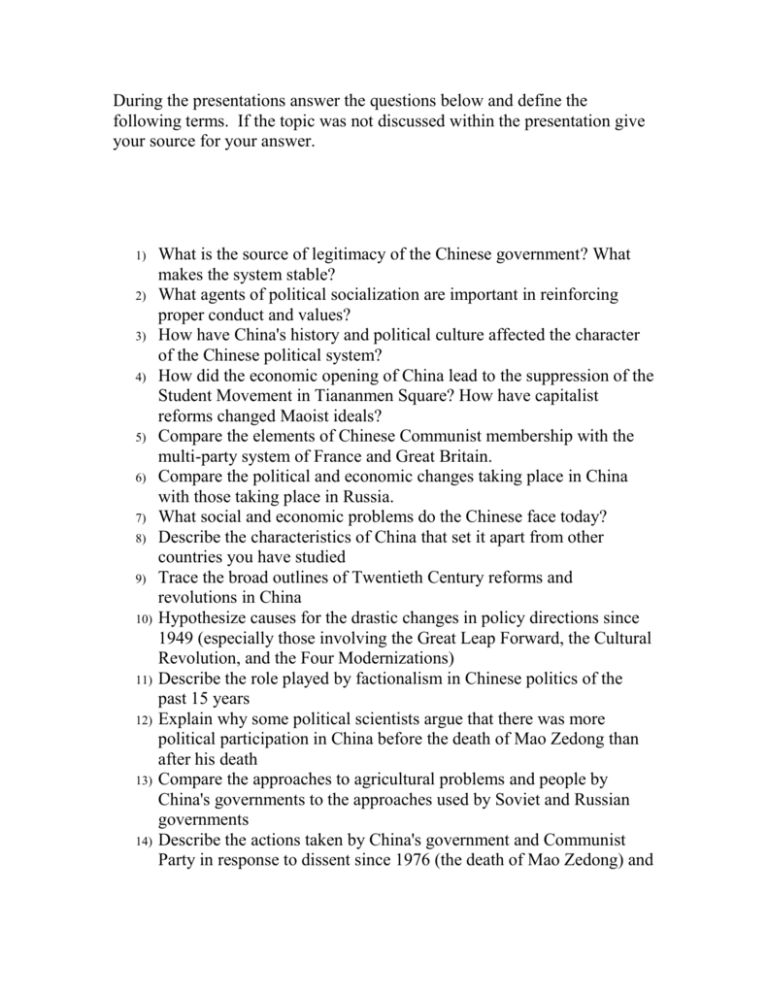
During the presentations answer the questions below and define the following terms. If the topic was not discussed within the presentation give your source for your answer. 1) 2) 3) 4) 5) 6) 7) 8) 9) 10) 11) 12) 13) 14) What is the source of legitimacy of the Chinese government? What makes the system stable? What agents of political socialization are important in reinforcing proper conduct and values? How have China's history and political culture affected the character of the Chinese political system? How did the economic opening of China lead to the suppression of the Student Movement in Tiananmen Square? How have capitalist reforms changed Maoist ideals? Compare the elements of Chinese Communist membership with the multi-party system of France and Great Britain. Compare the political and economic changes taking place in China with those taking place in Russia. What social and economic problems do the Chinese face today? Describe the characteristics of China that set it apart from other countries you have studied Trace the broad outlines of Twentieth Century reforms and revolutions in China Hypothesize causes for the drastic changes in policy directions since 1949 (especially those involving the Great Leap Forward, the Cultural Revolution, and the Four Modernizations) Describe the role played by factionalism in Chinese politics of the past 15 years Explain why some political scientists argue that there was more political participation in China before the death of Mao Zedong than after his death Compare the approaches to agricultural problems and people by China's governments to the approaches used by Soviet and Russian governments Describe the actions taken by China's government and Communist Party in response to dissent since 1976 (the death of Mao Zedong) and 15) 16) 17) 18) evaluate effectiveness of those responses in relation to political stability, economic performance, and democratization Compare and contrast the structure of China's political system with that of the Soviet Union Evaluate results of present-day political and economic policies of the party elite as implemented by the state Hypothesize about the relationship of economic reforms and political reforms in China Evaluate the degree to which global pressures will influence the future of economic and political reform in China Vocabulary Four Cardinal Principles Four Modernizations Four Mosts Gang of Four Great Leap Forward Guanxi household responsibility Hundred Flowers Movement Iron Rice Bowl Jiang Qing KMT Three Represents Liu Shaoqi Long March Mandarin Mao Zedong Zhu Rongzhi Cadre campaigns capitalist roader CCP civil society Confucianism Counterrevolutionary Maoism mass line May 7 Directive May Fourth Movement PLA Red Guards Red vs Expert Sino-Soviet split Socialist Education Movement Special Economic Zones Standing Committee Sun Yat-sen Taiwan Taoism Tiananmen Square Zhou Enlai Li Peng Danwei Democracy Wall democracy movement Deng Xiaoping Eight Bigs extraterritoriality Cult of Personality Cultural Revolution factionalism Jiang Zemin
